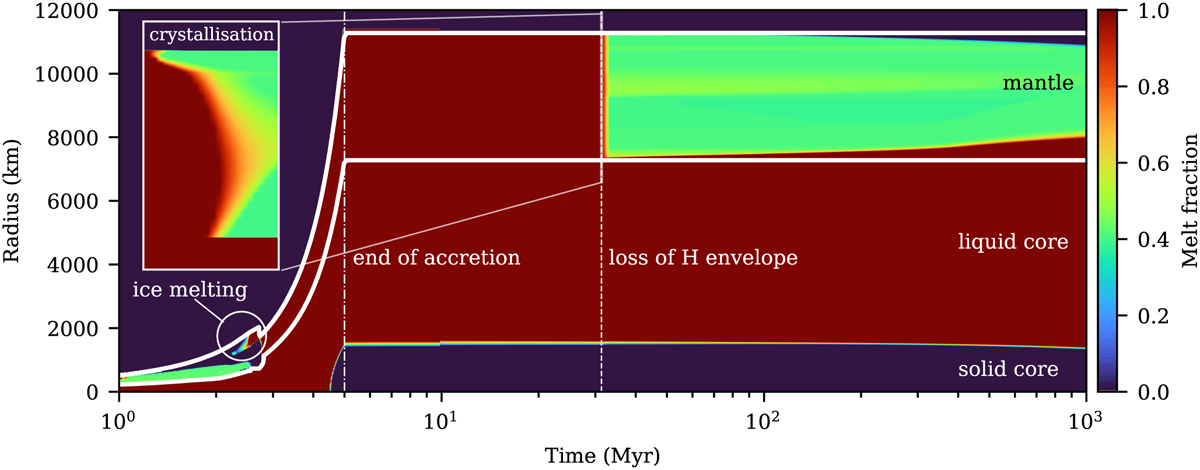Fig. 2

Download original image
Interior melt fraction of a planet with mass M = 4 M⊕ orbiting a medium rotator star at 1 AU. The colours show the melt fraction over time and radius with both the radius of the planet and the radius of the metallic core shown as a thick white line for reference. The end of accretion is marked with a vertical dash-dotted line at 5 Myr and the loss of the hydrogen envelope is marked with a vertical dashed line at 31.3 Myr. The magma ocean crystallises on a very short time-scale after 31.3 Myr as the hydrogen envelope is lost and its insulating effect disappears. The outgassing of volatiles, particularly CO2 and N2, takes place during the envelope’s lifetime but the majority of the volatile budget, including H2O, is rapidly degassed during the magma ocean solidification that takes place over 23 kyr here. The base of the magma ocean nevertheless does not crystallise because it remains in contact with the core, which is stable to convection and hence loses its heat very slowly. The greatest amount of remnant accretion heat is stored in the outer core of the planet, since any accreted metals will sink through the liquid magma ocean and end up in the outer core. This results in a gradual reheating and melting of the lower mantle.
Current usage metrics show cumulative count of Article Views (full-text article views including HTML views, PDF and ePub downloads, according to the available data) and Abstracts Views on Vision4Press platform.
Data correspond to usage on the plateform after 2015. The current usage metrics is available 48-96 hours after online publication and is updated daily on week days.
Initial download of the metrics may take a while.


